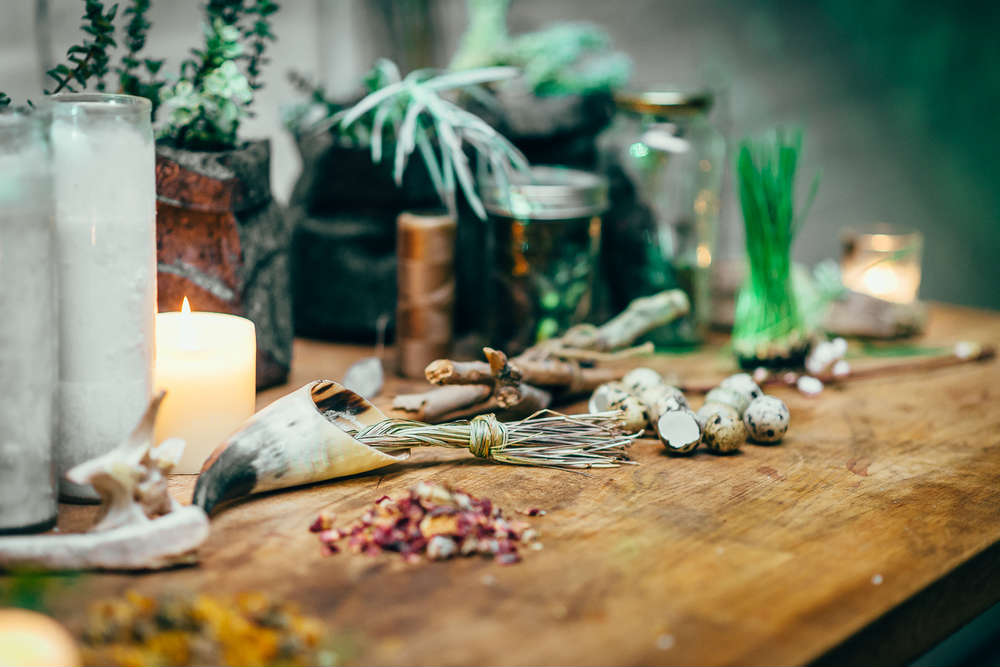If you’ve stayed with us through our series on DIY home booze-making, you may have noticed that the potential trouble spots have increased each time.
Our simple, at-home gin didn’t require much more know-how than making an infused vodka. To make vermouth, we needed our aromatics to play well with a wine base, some cognac to fortify it, and some sugar to round it all out. As we made cocktail bitters, we broke out the weird stuff like gentian and orris root, which at first blush don’t even seem destined for human consumption.
Now things really get perilous, because it’s time to take on amaro. Consider this a graduate level seminar in bitterness: The ingredients and flavor profiles are similar to cocktail bitters, but the stakes are much higher. After all, if your bitters aren’t perfectly dialed in, your cocktail can probably shrug it off. You’re only using a couple dashes at a time. With amaro, you may be using a whole ounce of the stuff in a cocktail, or even sipping it on its own.
In other words, flaws will be embarrassingly, mouth-puckeringly apparent. Go too light on the botanicals, and you’ll wind up with something like a dark, overly assertive gin. Go too heavy, and you’ll wind up with something akin to Malort. Exhibit A: my first attempt at amaro, in which one cinnamon stick and two cardamom pods overwhelmed the entire batch.
Fortunately, I had an ace up my sleeve right in my hometown—namely, Francesco Amodeo, the man (and the palate) behind D.C.-based amaro producer Don Ciccio & Figli.
“Not bad,” he proclaimed to my relief as he tasted my debut attempt. Apart from the obvious cinnamon problem, it needed more bitterness up front and a longer finish on the back end. “Give it a soul, give it an identity,” he said. “Then layer the rest for structure and body.”
So, how do we get there?
Making Amaro at Home
Degree of difficulty: Advanced
The definition: A bitter, herbal, lightly sweetened cordial.
The base: With bitters, we cared less about a smooth finish and more about maximum extraction, so grain alcohol was the play. Now, we’ll want to back off the ABV a bit to make sure the final product is palatable. Just like with at-home gin, a decent, $30 vodka should do the trick nicely.
The enhancements: You can get away with somewhat of a kitchen sink approach here. Multiple bittering agents are de rigeuer, as are all manner of sweet and savory spices, fresh herbs, and citrus. If you feel like foraging at the farmers market for some bitter greens or even rhubarb, go nuts. Vanilla, coffee, and chocolate work well to round things out.
The method: Your initial, main infusion (any large glass jar will do fine) should only take about two weeks. But be forewarned: You may want to hold back on any particularly powerful flavors—like my cinnamon and cardamom, but also cloves, allspice, and the like—and add them halfway through the process.
Once you’re happy with the initial balance, it’s time to add some layers in the form of vanilla, coffee beans, or fresh herbs, to name just a few examples. If you need to double down on any flavors you’ve already added, now’s the time. Keep tasting every day at this stage until you’re happy, then bring things down to proof with a lightly sweetened solution of sugar and water. You’re aiming for somewhere around 25% ABV.
Finally, notes Amodeo, the finished product needs to rest a bit: “For the first three to six weeks, you get heat. It needs to sit.” If you have a small barrel lying around, all the better to give it a bit of wood age.

Photo: Shay Harrington
Sample Amaro Recipe:
Group One
750ml vodka
1 tbsp angelica root
3 tbsp gentian root
3 tbsp cinchona bark
Peel of ½ grapefruit
Peel of a whole orange, with some flesh intact
½ tsp coriander seeds, crushed
1 tbsp dried hops
1 tbsp unsweetened cocoa
6 whole juniper berries
3 tbsp molasses
Group Two
1 cinnamon stick
2 cardamom pods, crushed
6 whole cloves
1 allspice berry, crushed
1 tsp dried anise seed
Group Three
1 whole vanilla bean
1 tbsp dark coffee or espresso beans
6 fresh sage leaves
1 sprig mint
Preparation:
Place first group of ingredients in a large jar, then seal and shake. Let steep in a cool, dark place for about a week. Add the second group of ingredients and repeat the process. Taste and adjust as necessary. Strain through cheesecloth or a fine mesh sieve. Now add the third group of ingredients and taste daily until you achieve layers of complexity and a long finish. Strain again. To bring down to proof, dissolve one cup sugar in 600ml of lukewarm water and blend. Allow the finished product to rest at least three weeks, in a barrel if you’ve got one.




I made my firs batch of amaro last December and I was very happy with the results. I will now make my second batch with fine tuning and using your recipe as a guide. Thanks so much for your help! ron moore